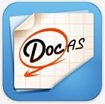New school supplies...purchased around a color theme of course. Shopping with my girls for first day of school outfits. A freshly waxed classroom floor. The spirit of the halls on locker day. These are a few of my favorite things! What do you adore about the start of school?!?
It's definitely that time of year! And the first days of school set the tone for the entire year. So how do you plan to build a safe and collaborative environment for your students? How will you build teacher to student rapport? Student to student rapport? And what activities will you use on the first day to jump start these efforts?
There are lots of great ideas floating around Twitter. I've retweeted several finds with the hashtag #fjhsmath for your convenience. Login to Twitter, select the discover tab, and type #fjhsmath in the search box. One tweet links to Sarah at her
Everybody is a Genius blog. She describes a first day activity called
"31derful" that she has used for years. The objective is to build a 5x5 arrangement of 25 cards in which each row and each column has a sum of exactly 31. The activity can be played with a standard deck of playing cards. If your students are unfamiliar with playing cards or you are worried they will be distracted by the point-value assignments, you can download the following set of cards to use as an alternative.
Begin the activity by asking teams to use the Kagan structure RoundRobin to discuss potential plans/strategies to complete the objective. Teams should select an initial strategy to try and then take turns playing card(s) according to their team plan. Only a few teams (or perhaps no team) will finish this task. However, the activity prompts a great reflective discussion on problem solving, perseverance, and teamwork.
And remember...
A teacher has only one opportunity
to make a positive FIRST impression.
Make it count!





